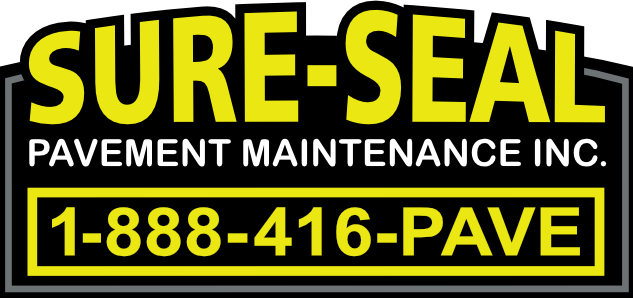 Most drivers generally don’t give much thought to the pavement they’re driving on; oftentimes, their main objective is simply to reach their destinations without any incident. While this is a fairly common practice, it’s interesting to note that there’s actually a great deal of structural planning and overlay that goes into creating a safe and secure driving surface. A lot of that has to do with the types of asphalt used and the methods implemented in laying it down. Throughout the years, the use of perpetual pavement has gained a great deal of momentum in the contracting industry because it’s one of the most durable, flexible, and cost-effective methods of asphalt instalment available.
Most drivers generally don’t give much thought to the pavement they’re driving on; oftentimes, their main objective is simply to reach their destinations without any incident. While this is a fairly common practice, it’s interesting to note that there’s actually a great deal of structural planning and overlay that goes into creating a safe and secure driving surface. A lot of that has to do with the types of asphalt used and the methods implemented in laying it down. Throughout the years, the use of perpetual pavement has gained a great deal of momentum in the contracting industry because it’s one of the most durable, flexible, and cost-effective methods of asphalt instalment available.
Perpetual Pavement
Even though the hype surrounding perpetual pavement is fairly new, the concept of it has actually been put into practice for many decades. Like the name suggests, perpetual pavement is long-lasting although it’s not necessarily permanent. When it was first implemented in the early to mid-1950s, there wasn’t a name for this concept and one wouldn’t be conceived until the year 2000.
This intelligent method of paving commercial roads, highways, residential streets, and parking lots allows contracting companies to produce top-of-the-line work at minimal costs and inconvenience to motorists. The average perpetual pavement construction project has a lifespan of about 50+ years with very little maintenance required along the way compared to other methods of laying asphalt.
How Does Perpetual Pavement Work?
The process of laying perpetual pavement is simple, but it yields extraordinarily stronger and smoother results than other methods of asphalt installation. It involves applying about three layers of the highest grade of hot mixture asphalt on top of a tough subgrade. The top layer acts as a protective barrier between the middle layer and the harsh elements, stresses, and strains of everyday road usage. It’s completely impermeable, which means that water and debris can’t seep through and erode the internal layers of asphalt, causing cracks to form from the bottom up. As a result, the middle and bottom layers can last for many decades and only the top layer will need to be repaired or replaced occasionally.
7 Benefits of Using Perpetual Pavement
Here are seven important benefits that are rendered from using perpetual pavement as opposed to other types of pavement installation methods:
Prolonged Safety Features for Motorists
The top layer of perpetual pavement is smooth and water-resistant, which means it reduces the amount of friction between vehicle tires and the asphalt. It also prevents slippage and accidents even in the slickest and most dangerous driving conditions. Each layer of asphalt has varying levels of thickness depending on the type of road on which it’s being installed. Roads with heavier traffic generally require thicker asphalt to sustain the weight of the vehicles.
Excellent Visual Contrast
By that same token, perpetual pavement also provides outstanding visual contrast from the asphalt to the lines and markings on the roads, making it easier for drivers to be able to see their own positions on the road as well as the positions of other vehicles. This can also help drivers keep control of their vehicles much more easily.
Lower Life-Cycle Costs than Other Asphalt-Laying Methods
Compared to other methods of laying asphalt, perpetual asphalt has an overall lower life-cycle cost due to the fact that it requires very little maintenance despite its exceptionally long lifespan. The internal layers of asphalt will never need to be repaired or replaced as long as the surface layer is properly maintained, and even then, the costs should be very insignificant.
Saves Time and Money
That old adage “time is money” applies to every contracting and construction business. The more time a company spends on single a road repair or reconstruction project, the longer that particular road will be out of commission, causing major traffic delays and inconveniences for everyone who uses that road. This might not be a problem for roads that seldom get traffic, but it can cause serious congestion on major roadways and highways. Installing perpetual pavements from the beginning reduces the need for repairs over time which means less time and money will be spent on them.
Enhances Efficiency
As long as the bottom layers of asphalt are properly applied from the beginning, only the top layer will ever need consistent and thorough maintenance. This helps to enhance the efficiency of road fixtures, which will result in fewer road closures and untimely traffic delays.
Low Environmental Impact
Nowadays, many construction and contracting companies are trying to find innovative yet effective ways of improving their green footprint and lowering their overall environmental impact. Using the perpetual pavement method can help numerous companies successfully accomplish this feat because ultimately, they’ll be able to use fewer hazardous materials when working on road repairs.
Recyclable Materials Used
By its very nature, asphalt is a highly recyclable and reusable material. Depending on the state of the asphalt, older mixtures can usually be reconfigured and re-mixed into new aggregates to create a reparative compound. The industry term for the resulting pavement is Reclaimed Asphalt Pavement (RAP). This process involves removing either all or parts of the pavement being repaired, reprocessing it and then blending it into the new mixture, whether it’s a warm or hot asphalt mixture. The RAP is then applied overtop the existing bottom layers of perpetual pavement and left to dry as usual. Not only is this method incredibly cost-effective, but it also helps to reduce the amount of materials produced per construction project and helps construction companies better control and decrease their environmental impact.
Sure-Seal Pavement Maintenance Inc. has over 20 years of experience in asphalt paving and repairs. We offer industry-leading, seven-year structural warranty on all of our projects, and we stand behind the quality and durability of our services, ensuring that our work will last for many years to come. For a free consultation, please call our number 416-410-3705 or, if you’re in Toronto, call 416-410-3705.

